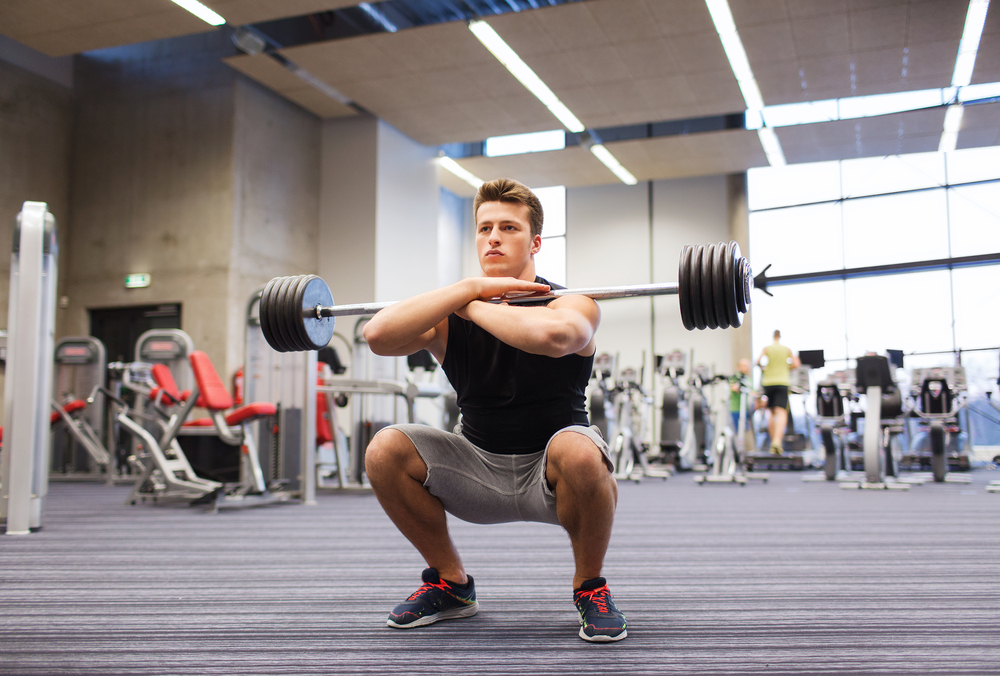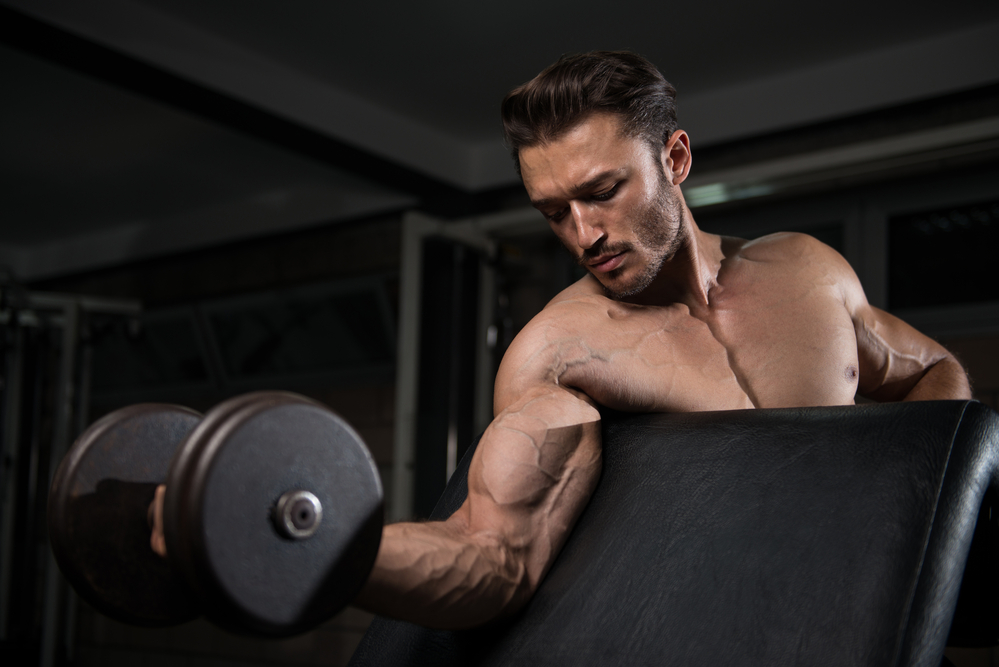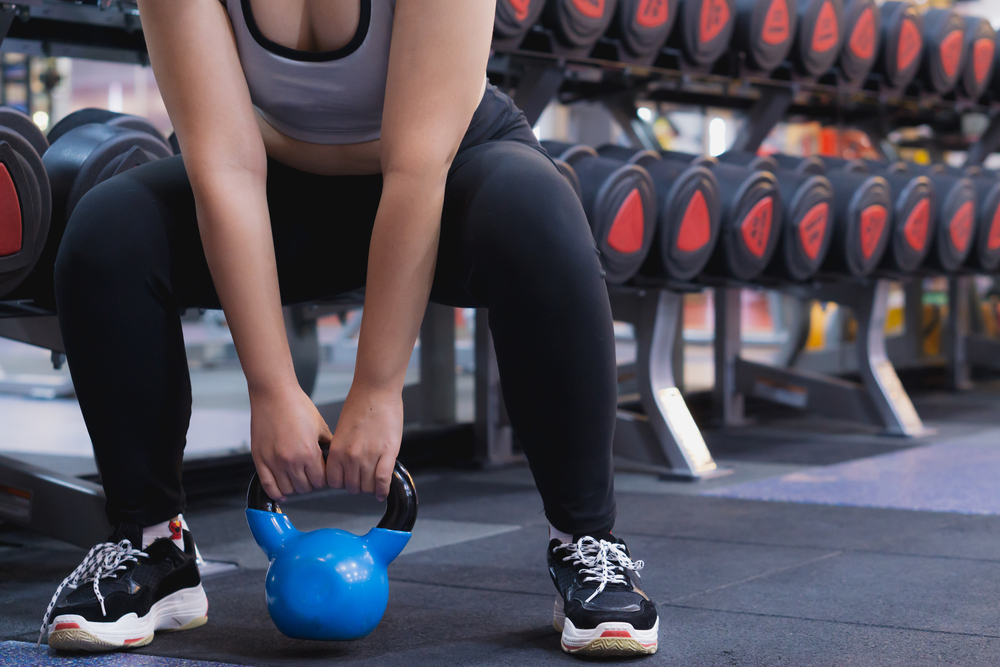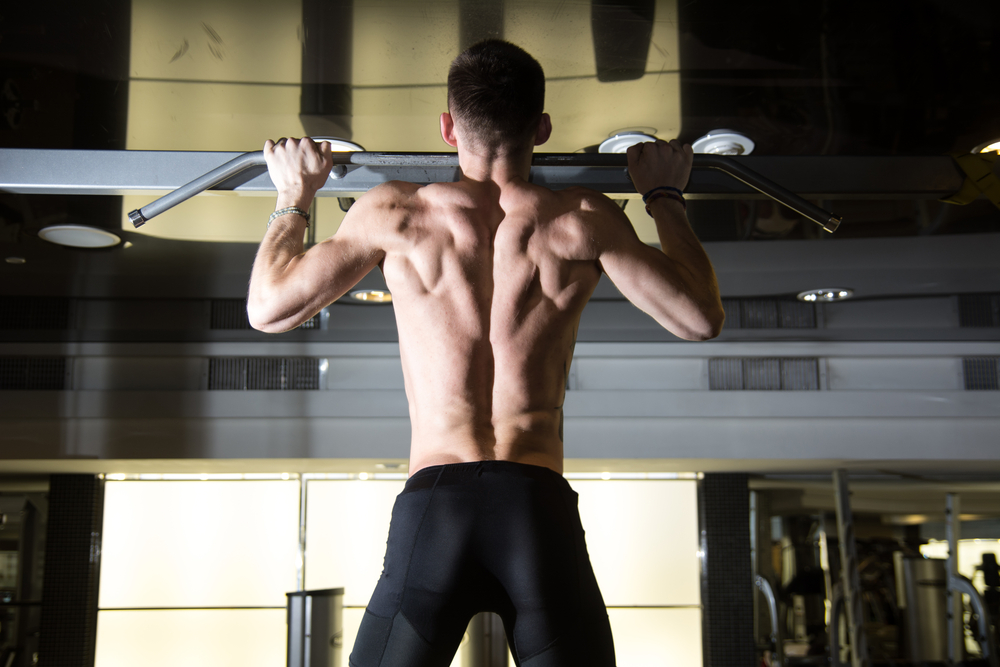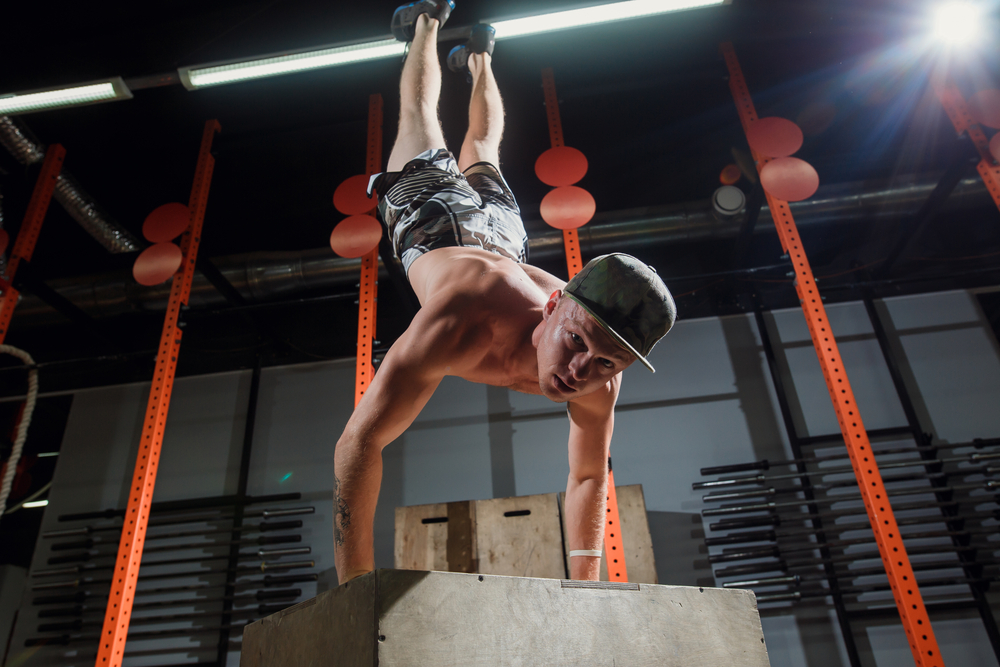
Table of Contents
The handstand push-up is a great functional exercise for developing the muscles of the arms and shoulder girdle. The exercise is suitable for both experienced athletes and beginners, but it is better for them to learn first how to do all the classic push-ups and incline push-ups. In our article, we’ll look at a muscle-friendly and spine-safe version of the exercise.
The benefits of exercise
The main goal of almost any exercise is to increase strength, endurance, and muscle volume.
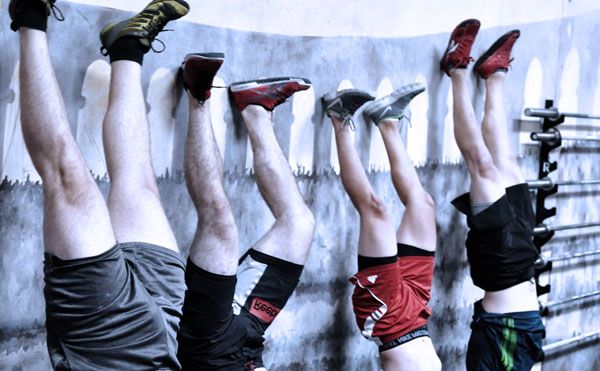
When you perform a handstand push-up, the main load falls on the muscles of the shoulders, and more specifically, on the middle bundles of the deltoid muscles. Traps and triceps also work. You can imagine that you are doing behind the neck press, only in an inverted position.
Handstand push-ups are effective for the following reasons:
You can do intense shoulder training without additional equipment. Your own body is the weight to lift. How much do you weigh? Deltas will appreciate this load!
Biceps and triceps get a good workout as well
There is no compression load on the spine. It’s only relevant with the right technique and, which is extremely important, you need to forget about kipping. We will look at what kipping is later
By turning upside down, you shake up your circulatory system, which is invaluable when working sedentary. Thus you can prevent congestion in the pelvic area, plus the exercise has a beneficial effect on the nutrition of the vessels of the brain
Due to the weight of the head, a gentle stretching effect is exerted on the muscles of the neck and vertebrae
A sense of balance develops, and coordination improves. The fear of an inverted position of the body disappears
In other words, exercise develops the shoulders and arms and has a beneficial effect on the cardiovascular system and spine
Contraindications
You should not try to do handstand push-ups unless your muscles are sufficiently prepared with basic push-ups. If you lose control, you can fall on your head and injury yourself.
In addition, the exercise is contraindicated in the following situations:
Injuries to the hands, elbow, and shoulder joints
High blood pressure, vascular diseases of the head, eye diseases
For girls – pregnancy and menstruation
Why can’t you put your head on the floor?
It’s not surprising if you learned about exercise from CrossFit sources. In this discipline, it is very popular in training and competition. There is, however, one controversial point that you should pay attention to first. This is kipping.
You probably noticed that when performing handstand push-up, CrossFit athletes on the last repetitions stand on their heads and push themselves out of this position upward due to vigorous extension of their legs. Then they again lower themselves on their heads and again push themselves out at the expense of their legs. I’m talking about kipping.
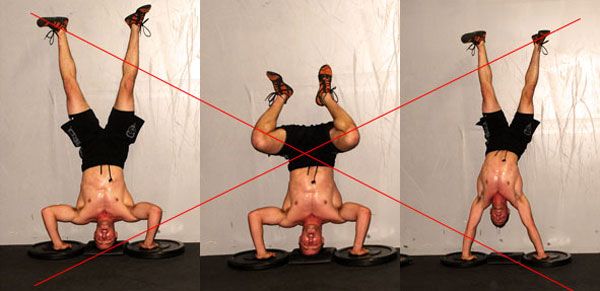
The number of repetitions in the exercise increases, but the damage done to the cervical vertebrae is incomparable with any rewards. Therefore, if you are not a professional athlete and are not chasing CrossFit awards, forget about kipping forever.
For a handstand push-up to be safe, you should never touch the floor with your head under any circumstances.
The fact is that the vertebrae of the cervical spine, unlike, for example, the lumbar, are small and very fragile. It’s not because nature overlooked something, but because the strength and size of the elements had to be sacrificed to ensure the mobility and flexibility of the structure. That is why you can rotate your head, bend your neck in all directions, and raise and lower your chin.
Of course, if at the bottom of the exercise you lightly touch the floor with your head, nothing bad will happen. But can you calculate the effort perfectly? If you hit a little harder, serious injury may result. Therefore, it is better to learn not to touch the floor with your head. In addition, many people have more or less pronounced curvature of the cervical spine. It means that when the head touches the floor, the spine will experience both compression and shear stress.
In general, always follow the above recommendations, because our goal is a beautiful, strong and healthy body.
Exercise technique
First, you should stand on your hands near the wall. There are two ways to do it:
Stand with your face to the wall at a distance of a couple of steps. Take an energetic step forward, quickly lower your arms to the floor and throw your other leg up. Then lift your other leg. Place your hands at a distance of 10 – 15 centimeters from the wall
Get on all fours with your back to the wall. Come closer to the wall and “walk” on it with your feet. Continue walking on your hands until your legs are straight up. This option is less preferable, since the closer you get to the wall, the greater the danger of falling back and hitting your back and head. If you stand far from the wall, the position will not be vertical
The difference between these two options is that in the second case, the pectoral muscles work. The more horizontal you are, the harder your muscles work. In fact, handstand push-ups turn into incline push-ups with feet elevated.
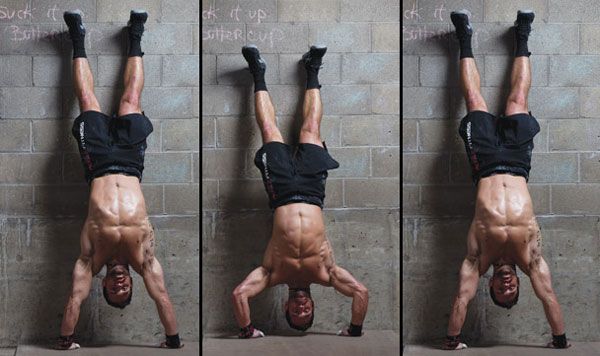
Let’s take a closer look at the handstand push-up technique:
How many reps should you do the exercise? As much as you can or as much as you wish. It all depends on what you need the handstand push-up for.
https://www.youtube.com/watch?v=pYx7CRs7kAM
If you are doing a shoulder muscle-building exercise, aim for 8 to 12 reps in three sets. These are the usual numbers for strength training. If you want to test yourself for endurance, train the maximum one-time number of repetitions. Learning how to do handstand push-ups is not as difficult as it might seem at first glance.
To increase the range of motion, you can do push-ups using special equipment. It’ll make your training as effective and quality as possible!



